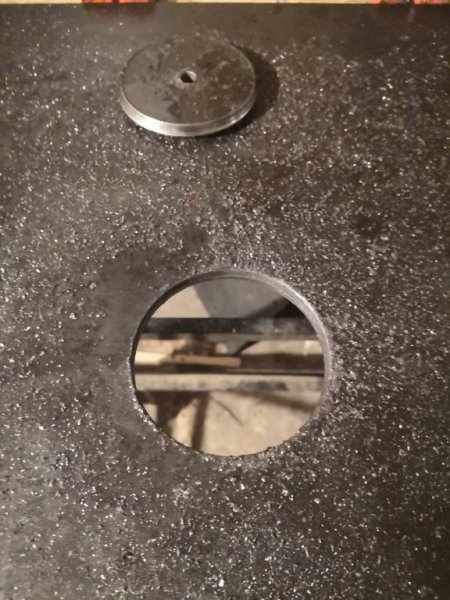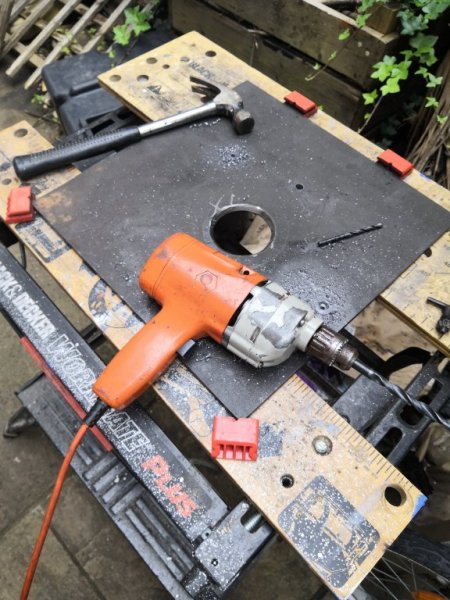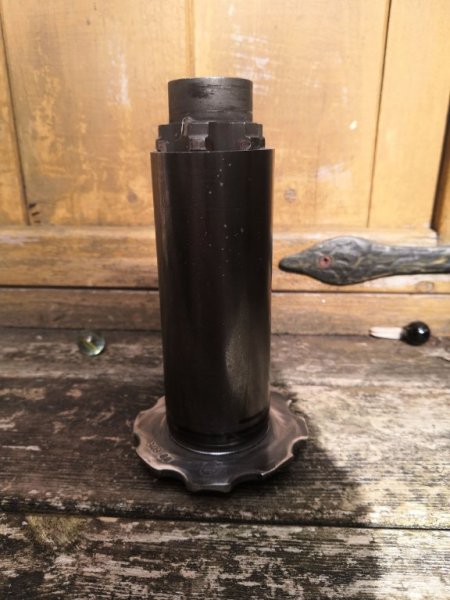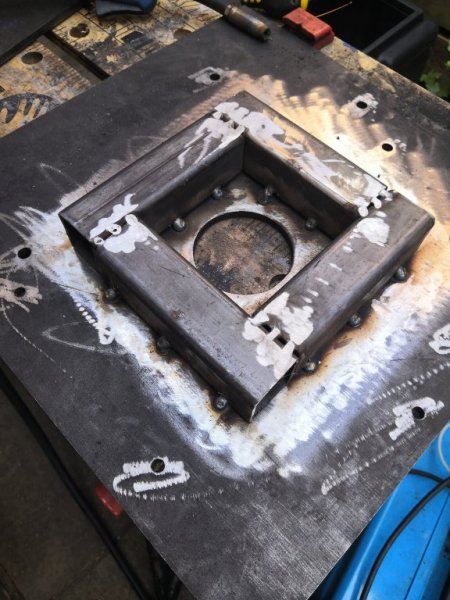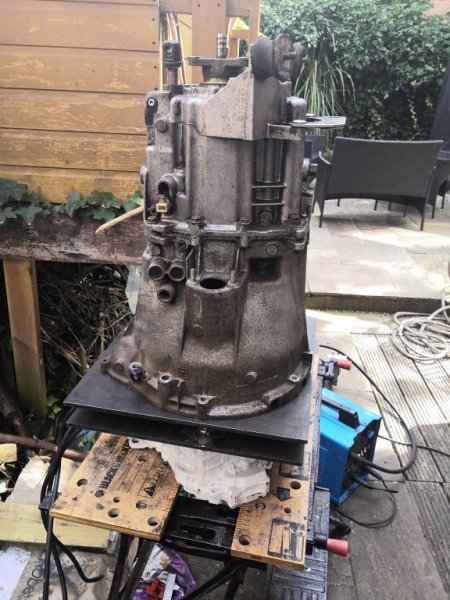Two steps forward, two steps back...
Right now, I wouldn't begrudge the authorities denying to approve my car for the roads, and possibly taking my licence, given that my spatial awareness is so bad I seem to have believed that two different components could occupy the same space in the engine bay. Let's rewind...
Front-end rebuild
Somehow it has been over a fortnight since my last update so this one is a bit of a monster. During that time there has been lots of activity, but work has been ramping up and in my infinite optimism, I also signed up for a course in something completely different earlier this year which requires lots of reading. Suffice to say I'm not exactly flush for time right now, so while things are getting done I'm getting worse at documenting them.
Also, with my daughter now back at school and clubs, most of the work has fallen to me now. So with only occasional help, I finished stripping all the components off the front end, wire wheeled everything, repaired some rust (notably on the X-frame that ties the front end together), and gave everything good coat of Hammerite.
Then, I did it all in reverse, this time with new lower suspension arms, bushes, track rod ends, and drop links. Oh, and a new set of coilovers. This has not all gone smoothly. Firstly, I couldn't get the new bushes into their mounts. I didn't want to spend £60 on a cheap press, not because I didn't want one but because I didn't want to have to store it. And none of my local garages would take the job on - or even had a press. In the end I bought some new mounts with the bushes already fitted. I'll either keep the spare parts or sell them on.
For a measly £195 I'm very happy with the new suspension, including rear shocks and springs and coilovers for the front. I got the coilovers compressed down and fitted to the old top hats without too much issue. Except for the massive scratches I seem to have put in the dining room table. Whoops. I even managed to cut out some new gaskets from a sheet of gasket paper on my wife's CNC paper cutter (see pics)
The problem came when I got them on the car: the springs rub on the tires. Reading the forums it seems this is a fairly common problem. I'm going to be changing the wheels anyway, so I'll think about this properly down the line. But for the time being I have kept the front end jacked up and ordered a very cheap set of 10mm spacers. I'm hoping this is enough and that the original wheel bolts are long enough.
Headlamps
One quick job was restoring some very milky headlamp covers. I could get them much better with a little more time, but I good going over with metal polish and a microfibre cloth worked absolute wonders. Good enough for now, since they won't be on the final car after the body conversion.
Battery Box
One thing that was a little more interesting was the battery box. My daughter and I started executing my cunning plan to turn an old washing machine into a battery box not long after the last post. We sliced out the middle third, around the door, then began welding the top and bottom sections together to create a box with enough space for 6 BMW cells in a 3x2 configuration. We need some more steel to finish it but it is now pretty solid, and great for mocking up (below) as it is pretty light still.
The original plan had been to mount the six batteries onto two thick pieces of steel bar I had lying around, with threaded rods coming up through the holes at each end. But then I had a bit of a brain wave. The original case already has perfectly spaced threaded holes sunk into it in the right orientation. Why not just cut that bit out of the box and bolt it into the bottom of my battery box? We shall see how that goes.
I also plan to re-use the original lid, cut down to the same size as the battery box. It has holes in the top that will match up to the threaded rods.
Battery Management System
I'd written most of this blog post before I remembered I'd done this. I stuck the SimpBMS software on a Teensy 3.2 microcontroller and hooked it up to the BMW cells via a CANBus Transceiver. Incredibly, it worked first time giving my nice clear readings of the voltages across all my cells. They're all sitting pretty low at 3.6-something (it was a couple of weeks ago now) but with very little delta, which is a good sign. As soon as I get a charging system hooked up I'll give them some juice.
I have stripped down the loom from inside the battery box and remade it with just the bits I need and then re-wrapped the lot in cloth tesa tape. The BMS itself is now mounted in a custom 3D-printed case. It's not amazing (there are still a load of jumper wires in there), but it will do for now.
The battery box came with both high and low voltage connectors, including a locking ampseal plug on the outside with all the tails just cut off. I plan to re-use this and have 3D-printed a shround to cover the wire exits. I'll just splice my own cables into this rather than starting from scratch. I've also knocked out a little clamping plate so that it can be fitted to a cut out of the sheet steel in my new battery box.
For the high voltage connection I have designed something similar to the shroud I made for HV connections on the inverter. It's not totally finished yet but only needs a little polishing. What I don't yet have is an emergency disconnect. Still thinking about that.
Charger
My plan for now is to use the charging capability of the hacked Prius Gen 3 inverter. The only problem being that it doesn't come with this capability out of the box. No-one has written the software yet and I've had no joy getting the Atmega chip that runs it to take code. So, I've ordered one pre-loaded with a bootloader and will get my local soldering genius to swap the chips when I can get over there.
Heater
Another thing I almost forgot before I looked at the photos from the last fortnight: I have modified the cheap Russian AC water heater module I got to disconnect and remove the pump from it, leaving just a nicely encased 2kw heating element with 19mm barbs for inlet and outlet. See pic below (I need to take more photos!).
I've removed the final pipework and solenoid from the heater matrix, leaving just two 19mm barbs sticking out of the firewall. I just need a reservoir, another pump, and a temperature sensor now and I should be able to set up a nice little heater loop.
I'm planning to power this off the full battery voltage, so will likely need an extra contactor. Considering using one of the ones from the BMW battery pack.
Assembly
With the front end back together and looking all clean and shiny, it was time to start adding all the good stuff in. While everything was back out of the car I had welded brackets or at least captive nuts for various ancillaries on to the adaptor plate or the combined motor mounts/mounting brackets for inverter and high voltage junction box.
My daughter and I first bolted the transmission to the adaptor plate, using a mixture of the original BMW bolts and fresh ones. We might go back and add some threadlock once it is all working. We then added in the coupler, which I'd done some welding on while it was out of the car. I've added a couple of weld around the press fit between the gearbox splines and the tube, and around the Ford clutch centre that mates with the motor splines. I then filed all this back as neatly as I could. Is it balanced? Only one way to find out. I sort of wish I had done a full seam between the BMW centre and the tube but it does seem very solid. Maybe next time it comes out I'll do that and see if someone can balance it.
Next step was the motor, which slotted on and bolted up surprisingly easily. Getting the splines to line up has been a bit of a pig in the past.
With the unit altogether I looped some straps around it all and we craned it into place. After a bit of shuffling back and forth we managed to get the propshaft aligned, the front mounts in place, and the gearbox sat back on its mounts. An hour or so under the car and I had all this bolted up as well as the bolts between gearbox, giubo (check out the spelling! No, me either) and propshaft in loosely. Everything will need torquing up at some point. Maybe some more threadlock too.
First thing I noticed: the motor mounts (and so everything riding on them) have come out a little skewed. It's not major and it won't prevent the car running. But I think it's going to annoy me eventually. This was the least of our problems though...
Where to begin? The oil cooler mounts for the engine cooling circuit are a fraction - maybe a centimetre - too high. So the output from the motor and the input of the cooler don't line up. And they're too close together for a curved bit of pipe. The idea was I could just use a straight short to connect them. Since I really don't want to take the adaptor plate to which they are welded out again, this is probably going to require some brute force engineering as I bend the mounts to make it all fit.
The oil pump mounts require some shorter bolts. This is fine, but it meant I need to get some more or cut some down. Either way, it didn't get attached today.
I had made a mount for the PAS pump. I knew this one needed some finessing so I left it in two parts that could be welded together once I tested the fit. Unfortunately, leaving these two parts separate only allowed for adjustment in one dimension and I need to adjust it in two. So more fabrication to do.
Then we get to the real problem: the inverter mounts and everything that hang off it (coolant pump, radiator) will foul where the battery box should fit. How I didn't realise this I have no idea, but it became pretty obvious when I fitted it all this time. The inverter needs to move up, left, and back to clear the battery box. And the ancillaries need relocating completely. To where, I'm not yet sure.
So, out came the grinder. I masked off as much off the engine bay as possible with carboard before cutting, but the dust and particles still get everywhere. I'll need to grind back some of my nice new paint to weld in some new mounts but this can all be done in situ now - especially now my welder is working better. On top of new gas and a new earth clamp, I have now rebuilt the torch, resulting in much less play in the swan neck and much better control of gas and wire flow.
Next steps
So (this has been a very "So..." blogpost. Sorry.), instead of just wiring and plumbing it all now, I obviously have a fair but more fabrication to do. I'll probably start with sorting out the PAS pump and the cooling loop for the motor, since those are all in the least accessible places. I forgot to mention above that the vacuum pump mount was actually perfect, so I just need to work out how the pressure switch I secured works and hook all that up.
Then I will move on to the battery box and get that finished up. Will be great to get the batteries actually into the car, though I might want to test charging them outside of it to start with! With the batteries in I can adjust the coilovers to get a decent ride height.
Finally, once the battery box is made up and mounted, I will remount the inverter. In the meantime I'll likely eke out some hours to get cracking with the wiring now that the position of everything is pretty much finalised. I still need to make a case for the vehicle control unit was well, something I have been going around in circles on the design for.
That all done, I still need to get around to the back of the car, changing the rear suspension, dropping out the fuel tank, and seeing if any remedial welding is needed at that end (I didn't even mention that I had patched one of the sills - needs redoing more tidily but it has stopped the rot for now).
Until next time...
